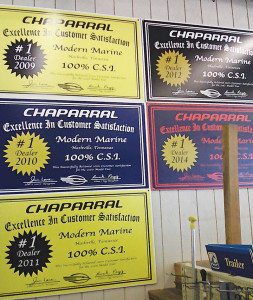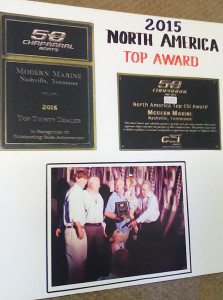Customer service that creates raving fans

Nobody wants unhappy customers. At the very base of any business, we’re looking for happy customers.
But there’s a big difference between satisfied and thrilled, between “not unhappy” and ecstatic. Far too often, companies end up settling for the former instead of aiming for the latter.
Whether you call them raving fans, promoters or brand evangelists, they are the customers that not only rate you highly, but share that information with other customers.
“Your customers are only satisfied because their expectations are so low and because no one else is doing better. Just having satisfied customers isn’t good enough anymore. If you really want a booming business, you have to create Raving Fans,” as Ken Blanchard and Sheldon Bowles wrote in their landmark customer service book, “Raving Fans.”
While the book is more than 20 years old, the idea behind it is timeless: create a customer who is so overwhelmed by the great customer service they receive that they can’t help but shout from the rooftops about it.
Building relationships
At Modern Marine, achieving excellent customer service is all about developing relationships.
“Modern Marine is committed to providing our customers with an excellent experience before, during and after the sale but this effort can only be successful if the dealer is strongly involved in creating a relationship during the entire selling, delivery and follow-up process,” said Johnny Padgett, owner of the Nashville dealership.
 Modern Marine has been Chaparral’s No. 1 dealer for CSI for nine years in a row, and is also a top-rated dealer for its other brands.
Modern Marine has been Chaparral’s No. 1 dealer for CSI for nine years in a row, and is also a top-rated dealer for its other brands.
Modern Marine has a relatively small sales team – just Johnny and his son Jason – so that can make it easier to manage those relationships, but Padgett believes the company’s strategies can apply to larger operations as well.
From the first contact, Modern Marine focuses on building that customer relationship.
“When we make a sale we try to make it a memorable event in that we want to relate to their whole family if we can by discussing things that don’t apply to boating at first,” such as their work, school or church, Padgett said.
 “We draw these things together to see how we can relate to their situation if we can – otherwise, we move on to anything we have in common – sports, entertainment etc., and then we try to blend it together with where they would be boating, their previous experience with boats … and give them reasons why they should buy the boat after determining their needs,” he said. “All the time we’re talking to them we’re building that relationship whether they realize it or not.”
“We draw these things together to see how we can relate to their situation if we can – otherwise, we move on to anything we have in common – sports, entertainment etc., and then we try to blend it together with where they would be boating, their previous experience with boats … and give them reasons why they should buy the boat after determining their needs,” he said. “All the time we’re talking to them we’re building that relationship whether they realize it or not.”
That effort continues through the comprehensive delivery process, which is handled by the service manager. Before they leave, the Modern Marine team snaps a photo of the buyers with the boat, a copy of which later goes on a their invoice and is placed in a separate sales notebook for that current year so they can look back at it to better remember them following up on CSI and service reminders.
“When I take their picture is when I mention we want to make them happy and we would appreciate [it] very much … if when they get an independent survey that they give Chaparral and Modern Marine a perfect 100 percent good score – while telling them we’re not perfect but every effort to help them will be done,” Padgett said.
Exceeding expectations
For the modern consumer, companies that meet expectations don’t cut it. Delivering a boat that works is what you’re supposed to do. Replacing a part that is covered by warranty is simply doing your job.
At the same time, while the best companies aim for perfection, they also realize that it is never attainable.
At Nichols Marine, winner of several customer service awards from its boat and engine brands, the important factor in success has been the willingness to go to almost any lengths to take care of a customer. With four locations in Texas and Oklahoma, the company sees a number of different customers throughout the year. Still, from the time the boat is delivered, the Nichols team stresses to its buyers that any problem, no matter how small, should be brought to their attention.
“We’ve agreed amongst ourselves a long time ago to spend the money,” said president Gary Nichols. “Customer service is about how much of an effort you’re willing to go to make sure the customer is always taken care of and that costs money. You have to budget a certain amount of money for doing that.”
If that means making repairs that go above and beyond warranty coverage, so be it. While Nichols can’t anticipate every potential problem, the service team works hard to keep a large supply of common parts on hand in order to quickly address problems.
“For the most part, we’ve been kind of lucky,” Nichols said. “We’ve anticipated some of the things that will go wrong, we’re prepared for most of that and generally we can make it pretty seamless for the customer.”
From top-to-bottom, Nichols has a culture of over-delivering on customer service.
“We fail sometimes, but they don’t see us fail from a lack of effort, and our failures would generally come in the fact of something fails and we’re not immediately able to take care of it for them,” Nichols said. “That’s our failure at that time, but they don’t necessarily see it as a failure on our part because they know that we have done our level best to try and address the issue for them.”
In the end, most customers are going to recognize the effort to make things right, even if the problem can’t be fixed right away.
“There is a payback from them in that regard, they will treat you fairer,” Nichols said. “You won’t have to address as many unreasonable requests from some of the consumers these days once they realize you’re doing everything you can to be fair.”
Those customers also become champions of Nichols Marine, helping spread the company’s message by word-of-mouth and driving repeat and referral business for the dealership. With little marketing or advertising, Nichols has become a market share leader in the markets it serves.
Modern Marine takes that use of its raving fans even further, using them to supplement the two-person sales team at the annual January Nashville Boat & Sportshow. At the time of delivery, Padgett asks buyers if they would be willing to help meet and greet and tell prospective buyers about their experience with their boat and with Modern Marine. Most agree, and he follows up with them in November or December to get a commitment.
“I usually will have 200 to 250 customers helping for anywhere from three to five hours each and wearing a name tag, saying ‘Let me tell you which boat I bought and answer any questions,’” he said. “It sends a strong message to the public (and our competition) that our customers really enjoy helping us and building the relationship.”
Padgett believes that a reputation for strong customer service helps potential buyers feel more confident and can make a difference in closing the deal.
“When you enter our showroom you will notice the large CSI signs that are displayed in our showroom and at the boat show,” he said. “It makes a statement for all to see that we have earned our customers’ approval and satisfaction and that we want to earn approval from new prospects who are seeing those signs. … CSI results have to have a positive effect on their decision.”
The Ultimate Question
In recent years, many companies have embraced the Net Promoter Score as an alternative way of measuring customer service.
 Net Promoter is based on the idea that customers fall into three categories: “Promoters” are loyal enthusiasts who keep buying from a company and urge their friends to do the same, “Passives” are satisfied but unenthusiastic customers who will not be particularly loyal and “Detractors” are unhappy customers.
Net Promoter is based on the idea that customers fall into three categories: “Promoters” are loyal enthusiasts who keep buying from a company and urge their friends to do the same, “Passives” are satisfied but unenthusiastic customers who will not be particularly loyal and “Detractors” are unhappy customers.
At its core, Net Promoter focuses on a relatively simple question (The Ultimate Question, as it were): On a scale of 1 to 10, how likely is it that you would recommend this company to a friend or colleague? Those that respond with a 9 or 10 are the promoters, 7s and 8s are passives and 6 or less are detractors. The Net Promoter Score is calculated by taking the percentage of customers who are promoters and subtract the percentage who are detractors.
As explained by author Fred Reichheld, “Just as detractors have a bullhorn for spreading their negative word-of-mouth, promoters have one for spreading their positive word-of-mouth. Promoters bring in new people. They talk up a company and burnish its reputation. They extend the company’s salesforce at no cost.”
For more on Net Promoter, visit netpromotersystem.com.




